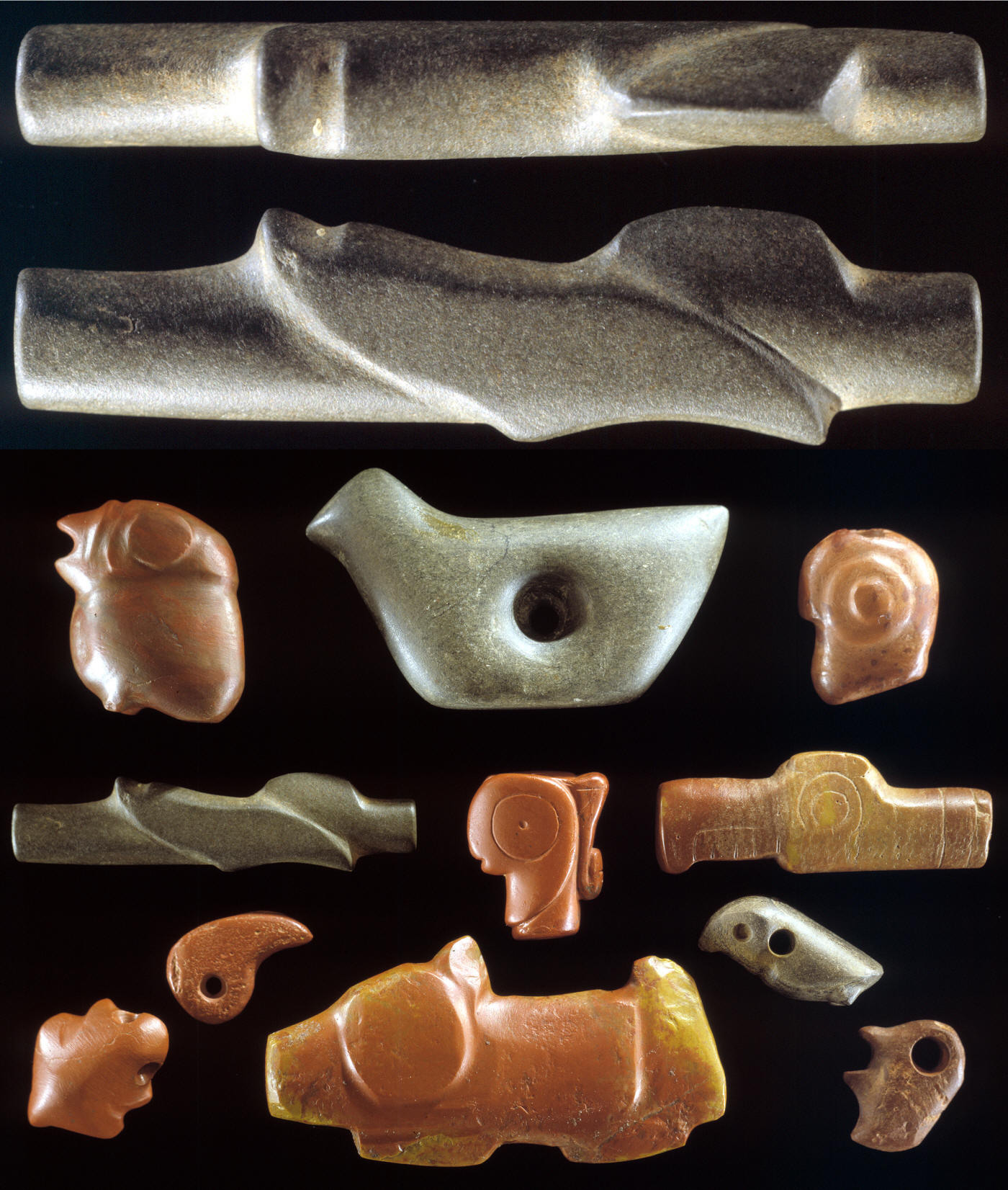|
STONE CARVED CICADA BEAD
The stone bead at the top
of this picture is believed
to represent a stylized version of a cicada or locust. Its main feature
is the upswept wings that extend beyond the body. It was made by a
Poverty Point craftsmen sometime between 3,350 and 3,730 years ago. The
Poverty Point culture represents the people who were living in an area
in and around the states of Louisiana, Mississippi and Arkansas at that
time. The Poverty Point site is located in northeastern Louisiana, where
the largest earthworks of the period were built. Some of the nicest
examples of carved and polished stone beads have been found in this
area. Morse writes that, "---the "lapidary industry" is most
characteristic of the Poverty Point period in the (Mississippi)
valley." They were producing plain tubular beads but their animal effigy
beads are the most impressive. Birds were a common theme but they were
also making beads in the form of bears, squirrels, rabbits, dogs, and
frogs.
|
